From golden libraries to wetland sanctuaries, a new generation of design thinkers is shifting the spotlight from sleek, anthropocentric structures to the quiet genius of the natural world. Forget sterile smart cities and Instagrammable green roofs — today’s most resonant design installations are looking to birds, bugs, and ecosystems as collaborators. These nest-inspired structures are more than sustainable. They remind us that architecture doesn’t have to dominate the land. It can nestle gently into it.

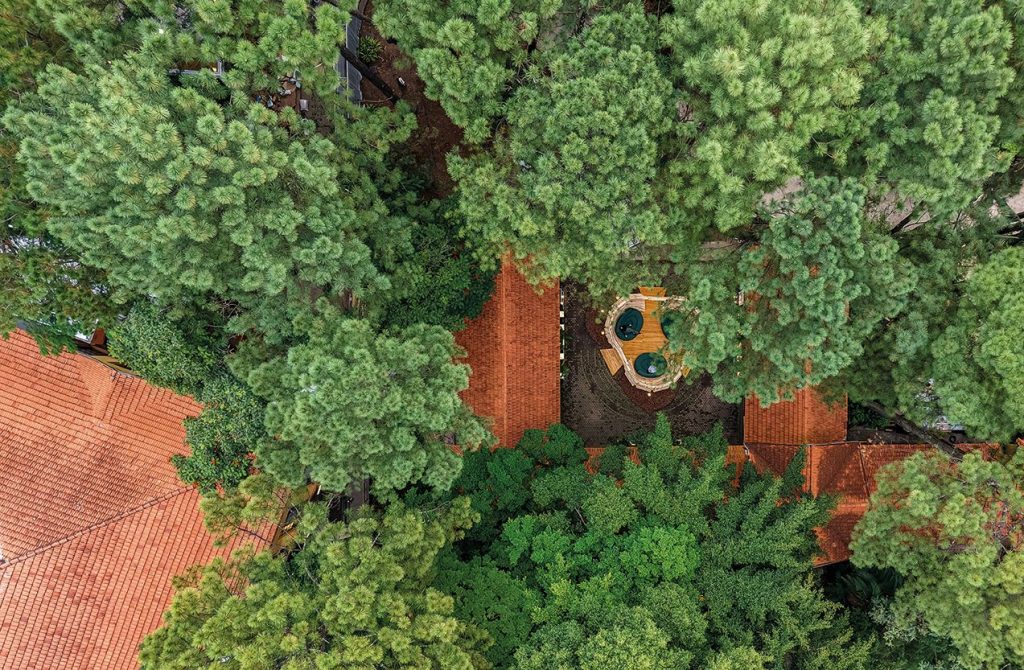
Ninho by Atelier Marko Brajovic
At the heart of Casacor São Paulo 2025, Ninho by Atelier Marko Brajovic quietly disrupts what we think architecture should do. More than a shelter, it’s a bio-urban prototype inviting city dwellers to slow down, lie back, and observe the wild rhythms of life that still hum within urban parks. Built from pinewood and recycled plastic, this egg-like pavilion nestles into Parque da Água Branca like a natural guest — light, porous, and unapologetically soft. Visitors recline in organic, nest-inspired seating to absorb the forest canopy above, reconnecting with the non-human lives around them.

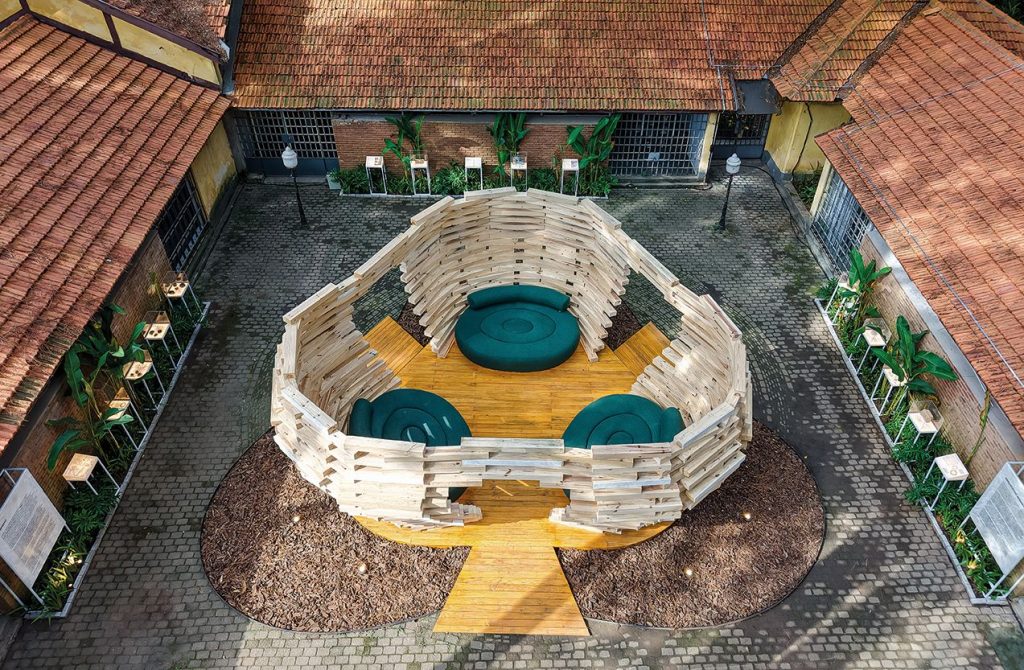
Ninho by Atelier Marko Brajovic
But Ninho is more than just form and function. It’s a philosophical provocation wrapped in a playful shell. Inspired by the ingenious construction methods of birds and insects, the structure blurs the lines between natural instinct and architectural intelligence. Atelier Marko Brajovic deliberately sidesteps the sleek coldness of high-tech design in favor of something ancient and tactile — a nod to the way animals scavenge, adapt, and build using whatever their environment offers. In doing so, Ninho questions our assumptions about who builds cities, and for whom.

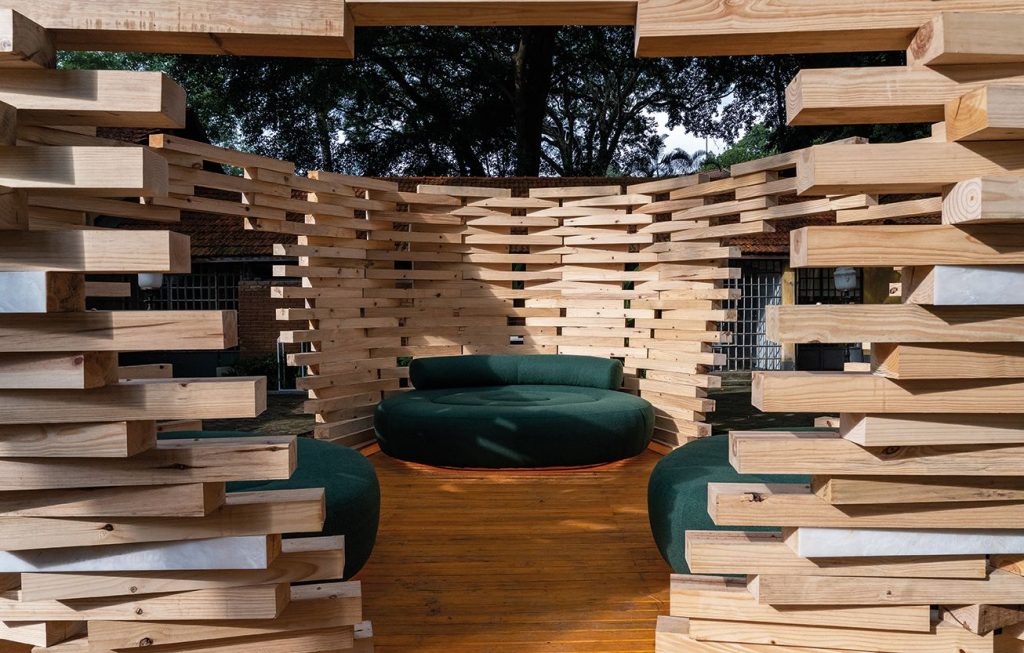
Ninho by Atelier Marko Brajovic
Surrounding the nest is the Animal Architects Exhibition, an imaginative curation that elevates non-human builders to center stage. Here, visitors explore the survival logics of birds, bees, and termites — builders that operate without blueprints but with a deep ecological intelligence. The exhibit seamlessly weaves into biomimicry case studies, showing how human architecture is beginning to learn from its quieter cohabitants. The final section, titled Multispecity, doesn’t offer answers so much as it expands the questions: What if cities were designed not just for nature, but with it?

The Reading Nest by Mark Reigelman
If Ninho invites multispecies futures, then The Reading Nest reaches backward — into myth, symbolism, and shared memory — to reimagine public space as a sanctuary of wisdom. Just outside the Cleveland Public Library, this luminous wooden structure rises like a relic from a forgotten legend. Artist Mark Reigelman crafted the piece from more than 10,000 reclaimed wood boards, assembling a roost-like structure that glows gold inside and balances raw textures outside. At 13 feet tall and 36 feet wide, it’s monumental yet welcoming — a visual bridge between forest and fowl, community and contemplation.

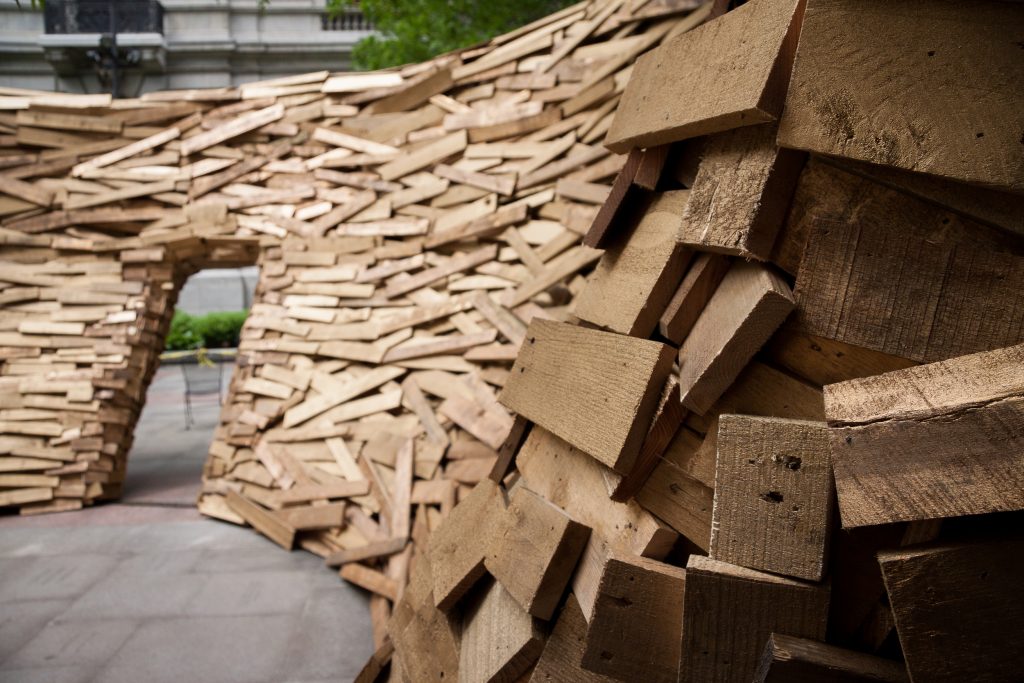
The Reading Nest by Mark Reigelman
The Reading Nest draws deeply from historical and mythological roots. Reigelman was inspired by legendary symbols like the Tree of Enlightenment and the Griffin — that half-eagle, half-lion protector of treasure and knowledge. These elements lend the work a sacred aura, while its location outside the library grounds it in public utility. It’s not just an art piece — it’s a vessel of collective access. Here, the materials matter too: discarded palette boards from Cleveland’s industrial past become carriers of new stories, threading the idea of renewal through every plank and nail.
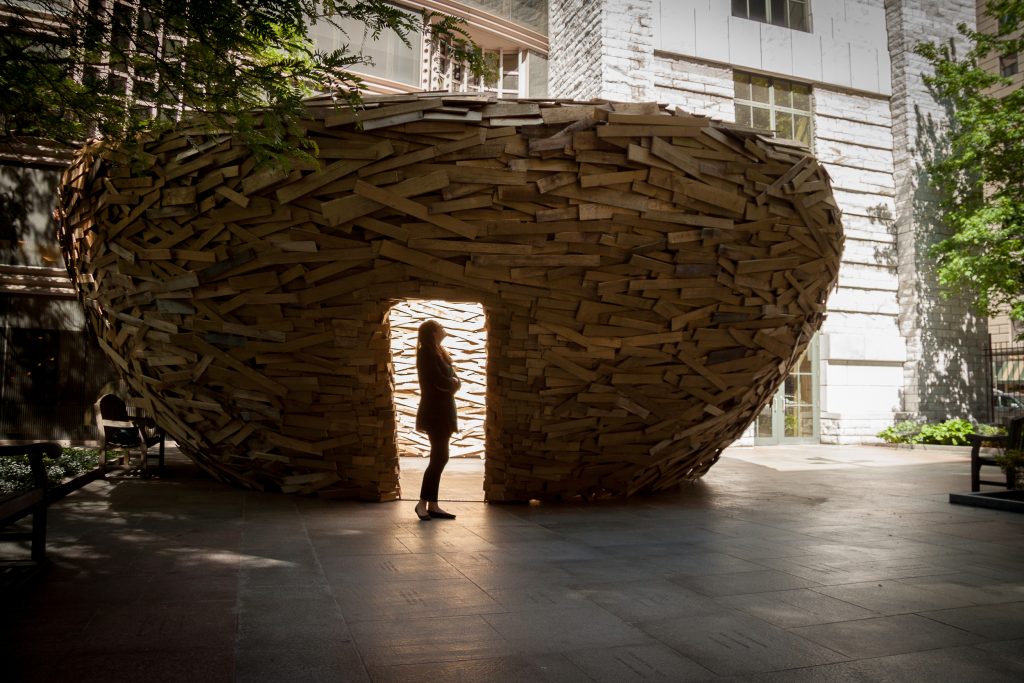

The Reading Nest by Mark Reigelman
The golden interior, inspired by the legendary Griffin — a mythical creature said to build nests of gold — bathes visitors in a warm, almost sacred glow. This mythical reference isn’t arbitrary. Griffins, often seen carved into the façades of civic institutions, were guardians of treasure and knowledge. Here, that treasure is access: to books, to history, to each other. And the use of reclaimed wood from Cleveland’s own industrial skeleton transforms discarded material into a vessel of hope and connection. In a time of digital overload, The Reading Nest offers something rare: a physical space that invites pause, invites wonder, and invites us to see the city as a living story we’re still writing.

Nesting Plan IV: White Wagtail by Cheng Tsung Feng (also header image)
Bridging from the urban library to the open wetlands of Taiwan, Nesting Plan IV: White Wagtail by Taiwanese artist Cheng Tsung Feng brings us full circle — back to the source. Created for the 2021 Siangshan Wetland Art Season in Hsinchu, this walk-in installation reimagines the instinctive architecture of the white wagtail, a local bird species, through the lens of human craftsmanship. Constructed from solid wood and fiber rope, it sits gently near a wetland lake, offering visitors a place to sit, reflect, and observe the choreography of nature all around.
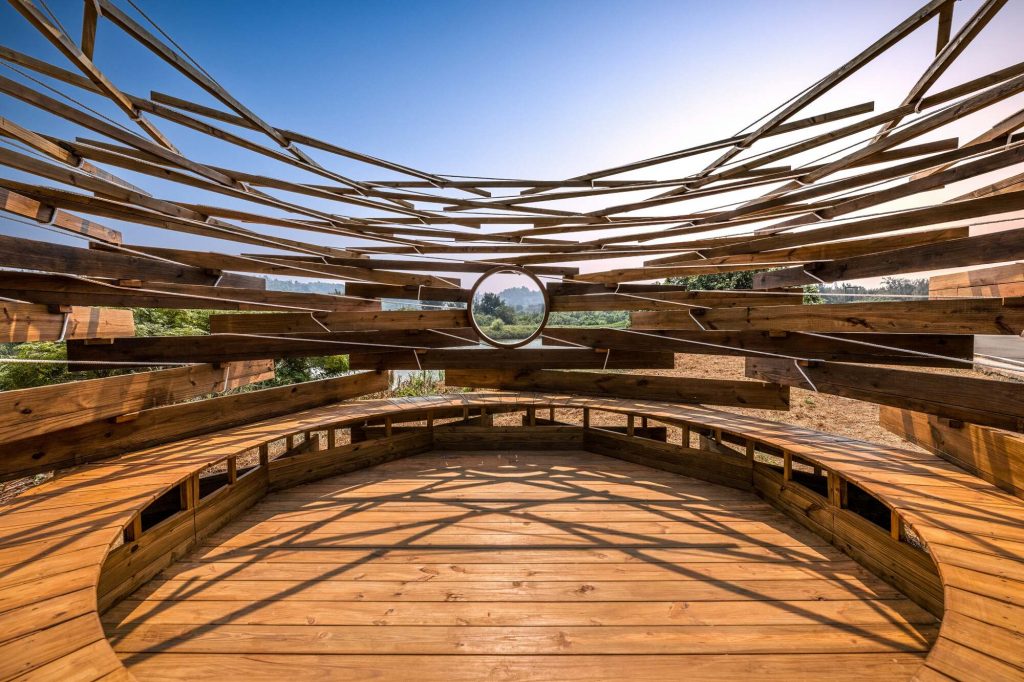
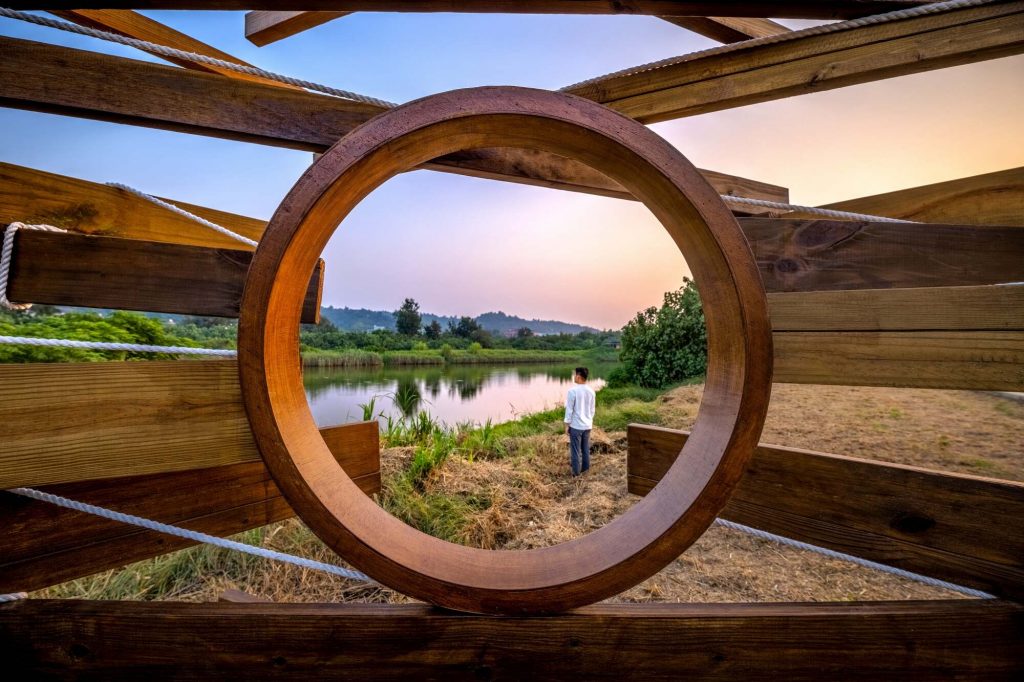
Nesting Plan IV: White Wagtail by Cheng Tsung Feng
What makes this project extraordinary is its fusion of instinct and interpretation. Feng doesn’t just imitate the white wagtail’s nest; he translates it. The structure captures the logic of avian design — flexible, adaptive, and responsive — using materials and methods borrowed from human construction. Positioned in the Nangang Birdwatching Area, an ecological hotspot alive with migratory species, the piece becomes both habitat and homage. It reminds us that wetlands aren’t just pretty backdrops — they’re active, complex ecosystems worth listening to and learning from.
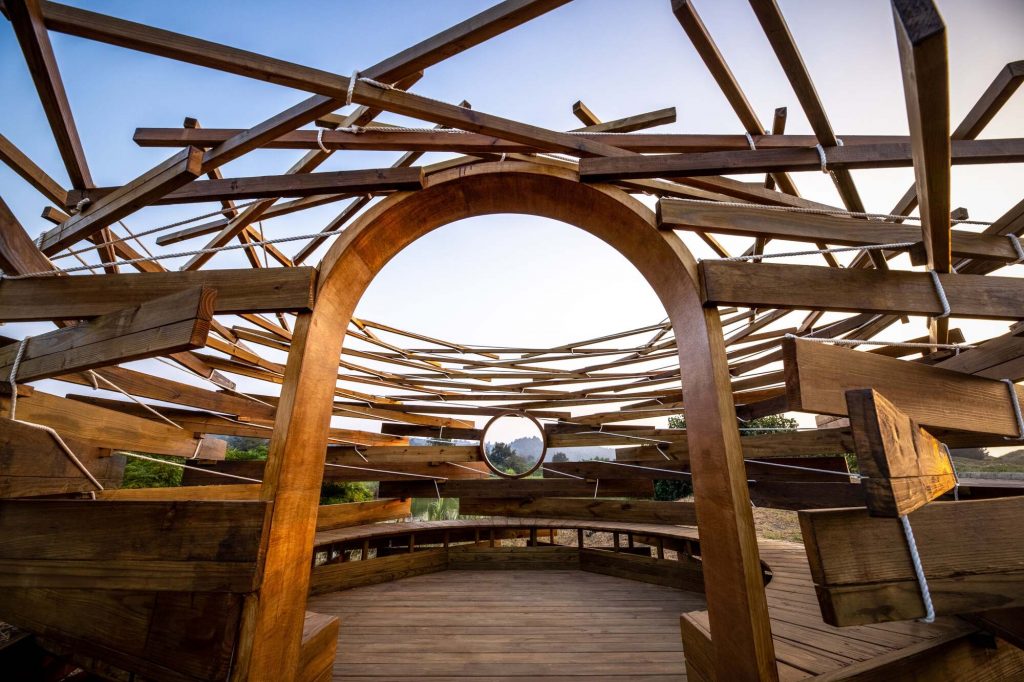

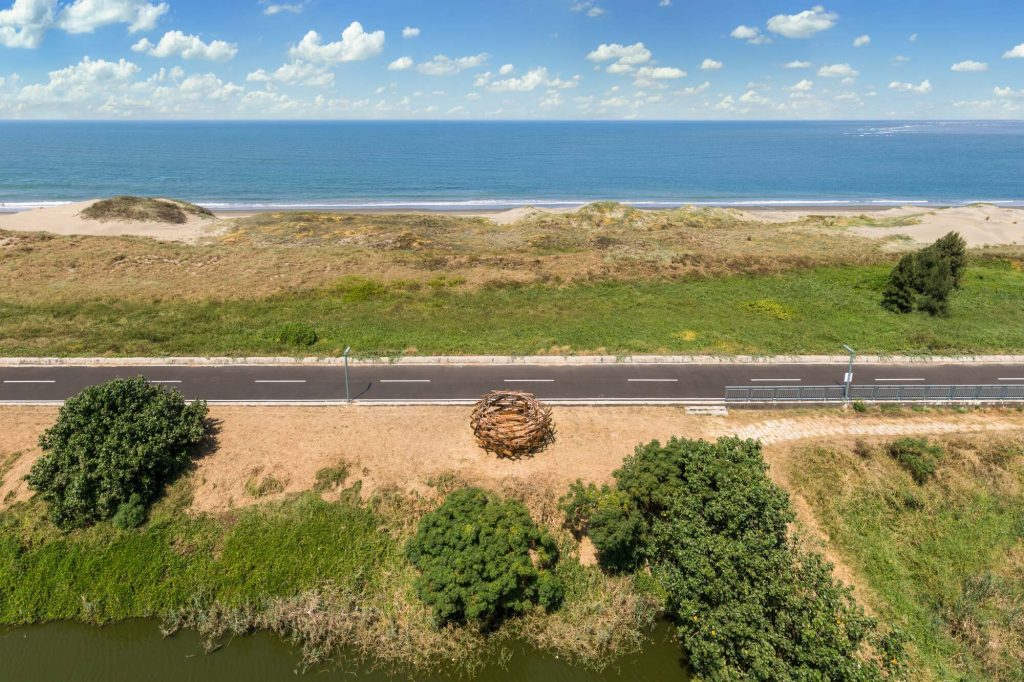
Nesting Plan IV: White Wagtail by Cheng Tsung Feng
The project is part of a larger curated effort by the Hsinchu City Government and creative agency Jiegou Creative, with contributions from a multidisciplinary team of designers, carpenters, and fiber artists. Constructed from solid wood and rope weaving, and documented through detailed photography and aerial imagery, Nesting Plan IV: White Wagtail reflects a collaborative blend of art, ecology, and community engagement. It stands as both a functional public space and a poetic reminder of the wisdom found in nature’s design.